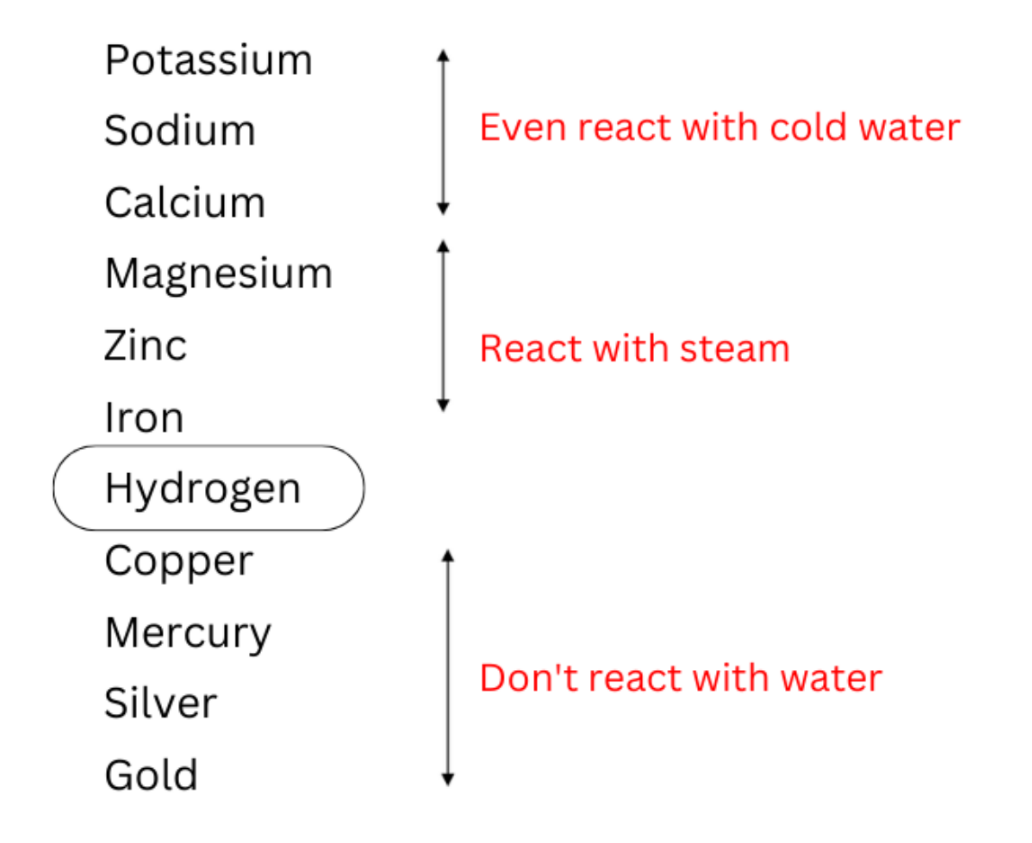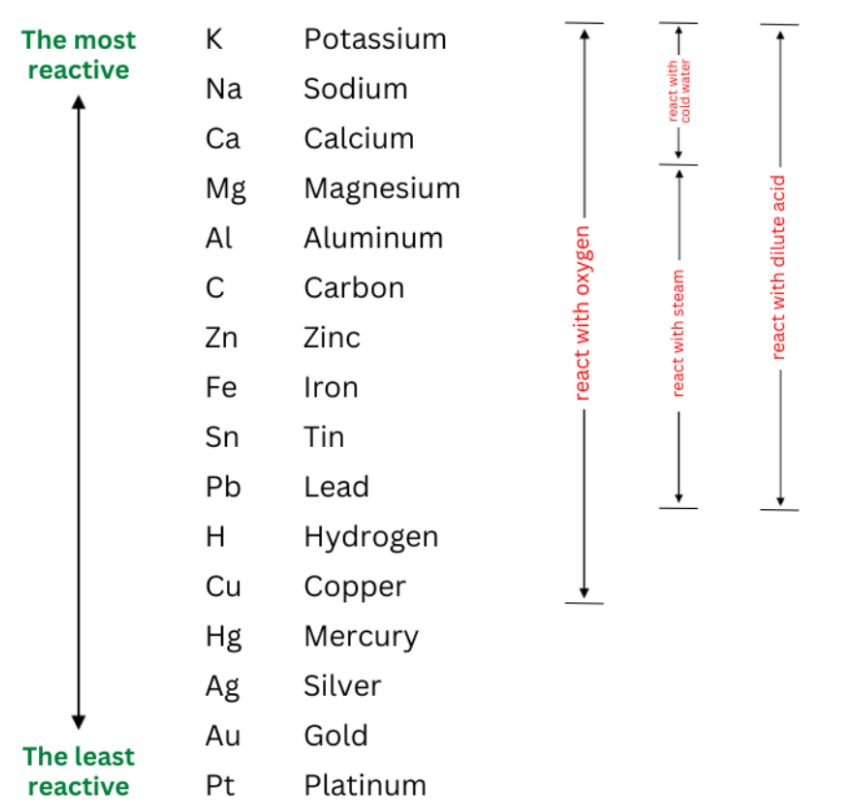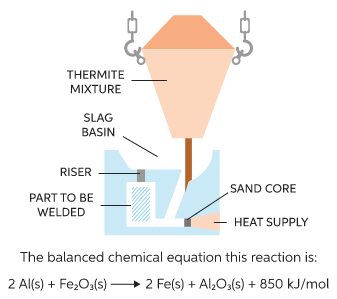To get reactivity series, let metals react with 3 things:
- Oxygen
- Water
- Dilute acid
Many metals react with oxygen → when it is hot enough
Metal + Oxygen → Metal oxide
Sodim + Oxygen → Sodium oxide
4(Na) + O2 → 2(Na2O)
Sodium → react very quickly
Magnesium → react quickly
Iron → react slowly
Copper → react when burned
Gold, silver → don’t react
Reaction of Group-1 elements with oxygen
Metals in Group 1:
- softer than other metals
- more reactive
- must be stored under oil (react strongly with air moisture and can explode)
When lithium, sodium or potassium are taken out, surfaces are dull (not shiny)
- Because metals react with oxygen in air
- Surface becomes covered with metal oxide
- When the pieces are cut newly → surfaces shiny
Metal reactions with water
- Cold water
- Hot water
- Steam
Not all the metals react with water vigoriously.
Metal + Water → Metal hydroxide + Hydrogen
Sodim + Oxygen → Sodium oxide
Mg + 2H2O → Mg(OH)2 + H2
Calcium → react slowly
Magnesium → react very slowly (almost no reaction)
Mercury, Gold → don’t react
Reaction of Group-1 metals with water
Metals in Group 1:
- Lithium → react with water to produce lithium hydroxide and hydrogen (gas bubbles)
- Sodium → more reactive than lithium with water
- Potassium → more reactive than sodium (so much heat generated that hydrogen gas caught fire)

Some metals will not react with cold or hot water as rapid as they react with steam.
Metal + Steam → Metal oxide + Hydrogen
Magnesium + Steam → Magnesium oxide + Hydrogen
Mg + H2O → MgO + H2
Calcium → react slowly
Magnesium → react very slowly (almost no reaction)
Mercury, Gold → don’t react
Steps:
(1) Put the cotton wool into the test tube and put some water in to get the wool soaked.
(2) Place the test-tube on a stand and place some magnesium in the middle.
> can use power to make the reaction quicker
(3) Put a stopper with a small glass tube
> stopper → to stop the oxygen gas from coming inside (hydrogen + oxygen = explosive )
> glass tube → for gases inside that come out from the reaction to go out (or else steam and hydrogen might react and explode)
(5) Heat the magnesium for a few mins/secs first, then changed to heating the soaked cotton wool
> Reaction starts
> Hydrogen gas coming out from the end of small glass tube can be burnt
Acids
Sulfuric acid - H2SO4
Nitric acid - HNO3
Hydrochloric acid - HCl
Most of the metals react with acid very rapidly.
Metal + Acid → Salt + Hydrogen
Magnesium + Hydrochloric acid → Magnesium chloride + Hydrogen
Mg(s) + 2HCl(aq) → MgCl2(aq) + H2(g)


Only the elements above Hydrogen can react with acid
They're more reactive than hydrogen from acid and take the place of the metal kicking out the hydrogen.
Displacement reaction → occurs when a more reactive element pushes out a less reactive element from a compound and replaces it.
For displacement reaction to take place, less reactive metal must be in a compound and that compound must be liquid.
Iron and copper sulfate experiment
When an iron nail is placed in copper sulfate,
- Iron nail become coated with copper
- More reactive iron push our copper and react to form iron sulfate
A more reactive metal can replace a less reactive one

Thermite reaction
Aluminium → displace iron from iron oxide when heated
Aluminum + Iron oxide → Aluminum oxide + Iron
2Al(s) + Fe2O3(s) → Al2O3(s) + 2Fe(s)
An exothermic reaction (release a lot of energy) Temperature gets so high that iron produced is molten
**melting point of iron = 1535 °C
- This reaction is a thermite reaction and is used to wield rails together
- Iron oxide and aluminum powder react in a container placed on the rails
- Molten iron produced is shaped and used to join rails together
To react → mixture has to be ignited → use another exo reaction (magnesium powder and barium nitrate) → provide energy to start displacement reaction
Thermite reaction = an exothermic reaction between metal powder and metal oxide

Displacement reaction using carbon
Carbon:
- Can be used to displace some metals from their compounds - Will displace zinc, iron, tin, lead from their ores
Ore = a rock that contains a metal compound
- Discovered that iron ore (mainly iron oxide) heated with charcoal at very high temperature produce molten.
- This displacement reaction is still carried out today, but on a large scale in a blast furnace.
To react → mixture has to be ignited → use another exo reaction (magnesium powder and barium nitrate) → provide energy to start displacement reaction
Iron oxide + Carbon → Iron + Carbon dioxide
Fe2O3 (s) + 3CO (s) → 2Fe (s) + 3CO2 (g)